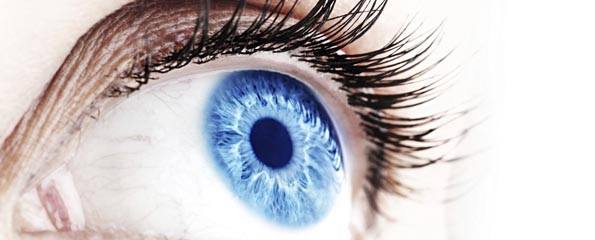Eye Injuries in the Workplace
- Introduction to eye injuries in the workplace
- Work related eye conditions
- Protecting the eyes from work related eye injuries
Introduction to eye injuries in the workplace
 There are a range of agents found in workplaces that can cause eye diseases, disorders or injuries. While many of these agents are often also found in everyday living environments, exposure at dangerous levels is most likely to occur in the workplace. For this reason, these conditions are commonly referred to as work related eye injuries or diseases.
There are a range of agents found in workplaces that can cause eye diseases, disorders or injuries. While many of these agents are often also found in everyday living environments, exposure at dangerous levels is most likely to occur in the workplace. For this reason, these conditions are commonly referred to as work related eye injuries or diseases.
Traditionally, work related eye injuries have predominately affected individuals working outdoors or in the construction, manufacturing and service industries. Male workers 25-44 years have the highest risk of work related eye injuries.
The increasing use of computers amongst office workers has also lead to an increasing burden of eye disorders amongst workers who spend long periods each day looking at computer screens.
Work related eye conditions
Both highly acidic (pH <4) and highly alkaline (pH >10) substances are toxic to the eye and cause chemical eye burns if they come into contact with the surface of the eye. Alkaline substances present the greatest risk. Such substances are most commonly found in the workplace, for example in laboratory chemicals or industrial cleaning products.
The eye/s may sometimes be invaded by small foreign particles (e.g. dust from manufacturing activities) which can cause irritation and inflammation. While foreign particles rarely cause lasting damage to the eyes, prompt removal of irritating particles is necessary to avoid permanent eye damage or scarring.
Blunt trauma injuries (i.e. injuries which do not penetrate the skin and do not result in external bleeding) to the eye occur as a result of being struck by a heavy object. They can cause the eye to bleed internally.
Allergic conjunctivitis is common amongst workers in the food handling and agricultural sectors who are regularly exposed to particular spices, fruits and vegetables. Excessive exposure to ultraviolet radiation (such as sunlight) is associated with working in an outdoor industry and also increases the risk of allergic conjunctivitis.
Eye diseases associated with ultraviolet radiation exposure
Outdoor workers are often exposed to ultraviolet radiation (in the form of sunlight) in excessive quantities. There are numerous eye diseases and disorders associated with the eyes’ exposure to ultraviolet radiation, including squamous cell carcinoma of the eye, cataract and ptergyum.Outdoor workers therefore have an increased risk of developing these conditions.
Artificial sources of ultraviolet radiation are also found in a range of workplaces and can damage the eyes. These include welding arcs, germicidal lamps and lasers. Thus the above mentioned diseases can also occur as a result of occupational exposure to artificial sources of ultraviolet radiation.
Using a computer for extended periods of time is associated with a range of temporary eye disorders including pain and altered vision.
Protecting the eyes from work related eye injuries
 More than 65,000 work-related eye injuries occur in the United States each year and an estimated 90% could have been prevented. There are a range of measures an individual can take to protect their eyes from work-related injuries and illnesses. In Australia, employees are required to provide their employees with an adequate standard of protective equipment. Protective measures which can be taken to prevent work related eye injuries include:
More than 65,000 work-related eye injuries occur in the United States each year and an estimated 90% could have been prevented. There are a range of measures an individual can take to protect their eyes from work-related injuries and illnesses. In Australia, employees are required to provide their employees with an adequate standard of protective equipment. Protective measures which can be taken to prevent work related eye injuries include:
In Australia, Occupational Health and Safety legislation now mandates that employers provide protective eyewear to their employees to prevent injuries. The type of eyewear required depends on the job being conducted.
Required standards for protective eyewear to prevent indoor exposure to artificial sources of UV radiation are detailed the Australian Standard AS/NZS1337:1992- Eye Protectors for Industrial Applications. Safety goggles with full face protection are particularly important for welders, who may be exposed to high levels of UV radiation, as well as foreign substances which can invade the eye. In other industrial settings, the use of eye goggles is also required and these should have side shields to protect against the invasion of foreign particles and liquids. It should be noted that such eyewear may not protect against dust, particles and vapours which can cause eye damage.
Individuals who spend time working outdoors or driving should be provided with sunglasses and hats to protect their eyes from harmful UV radiation. The Australian Cancer Council recommends that individuals wear sunglasses with wrap around (i.e. side) protection which comply with Australian Standard AS/ANZ 1067:2003.
Keeping eyewash accessible in the workplace
Initial treatment of many work related eye injuries can prevent serious and long-term eye damage. The single most common approach to treatment is irrigation of the eye with a saline eye wash (i.e. washing the eye out with a salty eye wash), to remove the foreign substance causing eye injury. In workplaces where workers are at risk of exposure to chemicals or small particles, eyewash solutions should be easily accessible so that eyes which have been invaded by foreign substances can be promptly irrigated and the likelihood of permanent eye damage reduced.
Not relying solely on contact lenses for protection
Contact lenses do not provide sufficient protection against work-related eye damage and should be worn in conjunction with other protective eyewear. In addition, contact lens users should be aware that contact lenses should not be worn when working with chemicals as they may increase the risk of injury.
More information
 | For more information on workplace health including office ergonomics series, useful tips on avoiding injuries in the workplace and costs on the workforce, see Workplace Health. |
References
- Peate, W.F.M “Work-related eye injuries and illnesses” in Am Family Physician, 2007, 75(7):1017-24.
- American Federation of State, County and Municipal Employees (AFL-CIO), Keys to Healthy Computing- An AFSCME Health and Safety Handbook, 2006, [cited 2009, April 15] Available from: http://www.afscme.org/ publications/ 1328.cfm?print=1
- Vecchio, P. Hietanen, M. Stuck, B.E. et al, Protecting Workers from Ultraviolet Radiation, International Labour Organisation and World Health Organisation, 2007, [cited 2009, April 15] Available from: http://www.who.int/ uv/ publications/ protect_workers/ en/ index.html
- Australian Cancer Council, Eye Protection from Ultraviolet Radiation, 2006, [cited 2009, April 15] Available from: http://www.cancer.org.au/ file/ policypublications/ pseyeprotectionaug06.pdf
- Australian Radiation Protection and Nuclear Safety Agency, UV Resource Guide- Australian Sunglass and Safety Glass Standard, 2006, [cited 2009, April 15] available from: http://www.arpansa.gov.au /uvrg/ rginfo_p18.cfm
Dates
Tags
Created by:

 Login
Login














